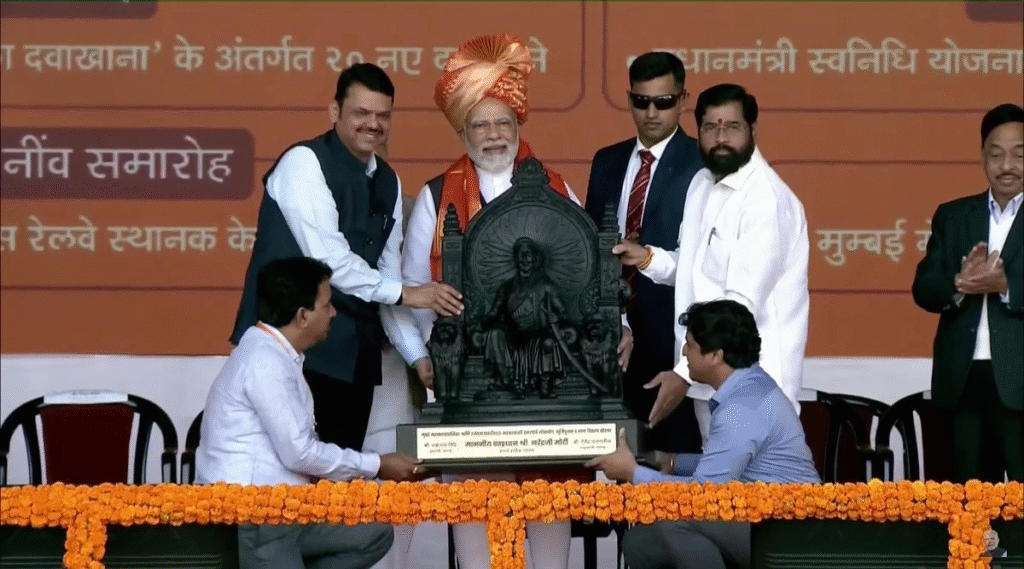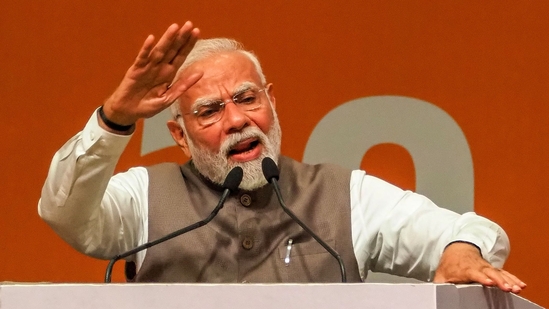
Prime Minister Narendra Modi’s recent visit to Bhopal marked a pivotal moment in the city’s development journey, heralding an era of transformative growth through a series of major project launches. These initiatives not only underline the government’s vision for urban modernization but also highlight its commitment to inclusive development and sustainable infrastructure. For the citizens of Madhya Pradesh’s capital, this visit ignited fresh hope for enhanced quality of life, better connectivity, and expanded economic opportunities.
A Vision-Driven Visit with a Focus on Progress
Bhopal, a city renowned for its rich cultural heritage and vibrant community life, is undergoing a renaissance of sorts. Modi’s visit was carefully planned to emphasize the government’s focus on infrastructural excellence and socio-economic upliftment. His presence injected energy into the city’s ongoing development narrative, with several symbolic and substantial project inaugurations marking a new chapter.
From the onset, the Prime Minister’s itinerary reflected an integrated approach to urban development — blending new construction with technology-driven solutions and public welfare programs. The projects unveiled aimed to address longstanding urban challenges such as traffic congestion, water management, sanitation, and public space enhancement, while also laying the groundwork for future resilience and growth.
Public reception was overwhelmingly positive. Local residents, business owners, and civic leaders expressed optimism that these projects would translate into meaningful improvements in everyday life. The government’s messaging reinforced that these initiatives were not just infrastructure upgrades but vital investments in the city’s future prosperity.
Infrastructure Modernization: Laying Foundations for the Future
One of the most significant aspects of Modi’s visit was the launch of major infrastructure projects designed to modernize Bhopal’s urban fabric. The government unveiled expansive road widening schemes, new flyovers, and bridge constructions aimed at easing the city’s notorious traffic woes.
These projects were meticulously designed to incorporate smart urban planning principles. Traffic management systems equipped with real-time monitoring, eco-friendly construction materials, and energy-efficient street lighting formed an integral part of the upgrades. The emphasis was on creating not just wider roads but smarter transport corridors that could adapt to the city’s growth dynamics.
Additionally, the launch of improved public transit facilities promised to ease commute pressures and reduce pollution. New bus terminals and dedicated lanes for public transport were planned to enhance efficiency and reliability, encouraging more citizens to choose eco-friendly travel options.
Water supply and sanitation infrastructure received equal attention. New water treatment plants, pipelines, and sanitation facilities were inaugurated to ensure equitable access to clean water and hygienic living conditions, especially in under-served neighborhoods. This holistic focus on basic services alongside grand infrastructure projects demonstrated the administration’s inclusive vision.
Economists and urban planners have noted that these investments will likely attract further industrial and commercial activity to Bhopal. Improved connectivity and streamlined logistics could enhance the city’s appeal for startups, manufacturing firms, and retail businesses alike, potentially ushering in a new era of economic diversification.
Urban Renewal and Sustainable Growth Initiatives
Beyond the physical infrastructure, PM Modi’s visit highlighted a strong commitment to urban renewal and sustainability. The projects unveiled included the creation of green spaces, parks, and pedestrian-friendly zones designed to make the city more livable and environmentally conscious.
The government’s urban beautification efforts were evident in initiatives to revamp public parks and recreational facilities, fostering community engagement and social cohesion. The integration of eco-sensitive designs and indigenous vegetation in landscaping showcased an effort to preserve Bhopal’s natural heritage while enhancing urban aesthetics.
Efforts to promote clean energy and waste management were also central to the sustainability agenda. Solar-powered streetlights, waste segregation programs, and recycling initiatives launched during the visit reflected a forward-thinking approach to environmental stewardship.
Public health and education received renewed focus through expansions of health clinics, school infrastructure, and digital learning resources. These social investments aimed to bridge development gaps and ensure that all citizens benefit from progress, regardless of their socio-economic background.
Such comprehensive planning underscores a government philosophy that urban growth must balance economic, social, and environmental goals. This approach not only improves quality of life but also positions Bhopal as a model city in sustainable development.
Political Significance and Governance Synergy
PM Modi’s visit was also a reflection of the political and administrative coordination between the central and state governments. It underscored the importance of cooperative federalism in achieving ambitious development targets and responding to citizens’ needs.
The political timing of the visit aligned with efforts to reinforce the government’s development credentials ahead of upcoming elections, with Modi personally endorsing the ongoing initiatives and encouraging local leaders to maintain momentum.
At the administrative level, the launch events showcased streamlined governance models that emphasize transparency, citizen participation, and digital innovation. The adoption of e-governance platforms and public feedback mechanisms demonstrated a commitment to making development more responsive and accountable.

Socially, the visit energized communities across Bhopal, sparking discussions about civic responsibilities, urban challenges, and opportunities for participation in shaping the city’s future. The government’s inclusive messaging sought to empower citizens, fostering a sense of pride and shared ownership in the city’s transformation.
Media coverage further amplified the visit’s impact, elevating the profile of Bhopal’s development agenda nationally and internationally. The narrative of rapid modernization coupled with heritage preservation resonated widely, presenting a compelling story of urban renewal.
Economic Potential and Future Prospects
The projects inaugurated during PM Modi’s visit are expected to have far-reaching economic implications for Bhopal and the broader region. Improved infrastructure, combined with investments in technology and public services, is anticipated to enhance the city’s competitiveness as a hub for trade, commerce, and innovation.
The construction sector, a key driver of urban development, is likely to experience a surge in activity, creating thousands of jobs and boosting ancillary industries. The ripple effects of these projects will extend to sectors such as real estate, retail, and logistics, further solidifying Bhopal’s role as an economic powerhouse in central India.
Bhopal’s emerging reputation as a smart city is also expected to attract international attention. Investors seeking opportunities in technology, sustainability, and urban planning are likely to view the city as a fertile ground for innovation and collaboration. The emphasis on clean energy and green infrastructure aligns with global priorities, making Bhopal an attractive destination for environmentally conscious businesses.
Tourism is another sector poised for growth. With enhanced connectivity and beautified public spaces, Bhopal has the potential to draw more domestic and international visitors. The city’s rich cultural heritage, combined with modern amenities, offers a unique blend of tradition and progress that appeals to a wide range of travelers.
Cultural and Social Dimensions of Development
While infrastructure and economic growth are critical, the cultural and social dimensions of development cannot be overlooked. PM Modi’s visit highlighted efforts to preserve and celebrate Bhopal’s unique identity while embracing modernization.
Heritage conservation projects received a significant boost, with plans to restore historical landmarks and promote local art and craft industries. These initiatives not only preserve the city’s legacy but also provide livelihood opportunities for artisans and cultural practitioners.
Community-driven programs aimed at enhancing social cohesion and inclusivity were also emphasized. From skill development workshops to public awareness campaigns on health and hygiene, these efforts reflect a holistic approach to urban development that prioritizes people over mere physical infrastructure.
Education and youth empowerment were central to the social agenda. The launch of digital learning platforms, vocational training centers, and scholarships for underprivileged students underscores the government’s commitment to equipping the next generation with the tools they need to succeed in a rapidly changing world.
Looking Ahead: Challenges and Opportunities
As Bhopal embarks on this transformative journey, challenges remain. The successful implementation of these ambitious projects will require sustained political will, efficient governance, and active citizen participation. Issues such as land acquisition, funding constraints, and coordination among stakeholders must be addressed proactively to ensure timely completion.
However, the opportunities far outweigh the challenges. With strong leadership, robust planning, and community support, Bhopal is well-positioned to become a model city that balances growth with sustainability, innovation with tradition, and development with inclusivity.
PM Narendra Modi’s visit has undoubtedly set the stage for a new era in Bhopal’s history. As the city moves forward, the legacy of this moment will be measured not only by the physical structures built but also by the lives transformed and the aspirations fulfilled. This is a story of progress, resilience, and hope — a testament to what can be achieved when vision meets action.

